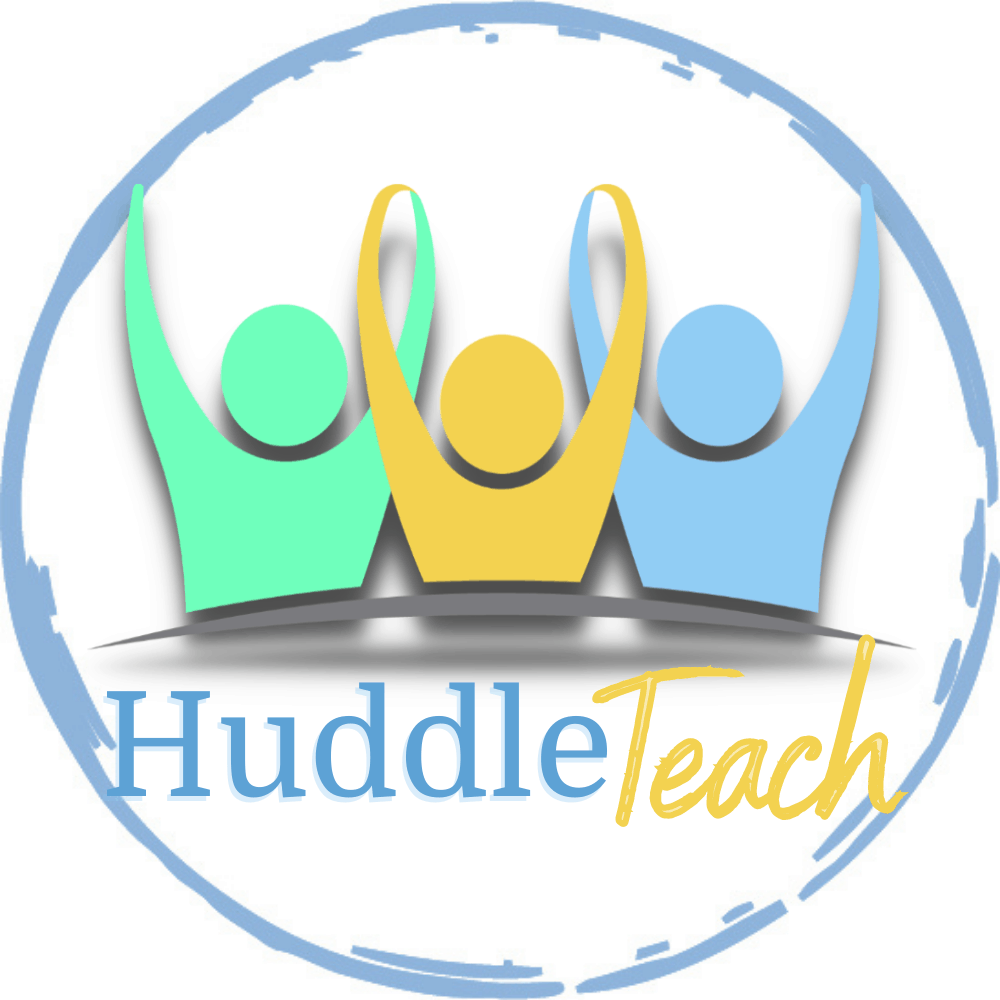Join the conversation on the platform you prefer!
This article is a must read and is a preview of some research discussed in our first email of 2025, Research Says…. Subscribe to our newsletter on our website, but take time to read this now. ☺️ www.facebook.com/share/15GspHNxP2/?mibextid=wwXIfr
... See MoreSee Less
This content isn't available right now
When this happens, it's usually because the owner only shared it with a small group of people, changed who can see it or it's been deleted.
⏰ ‘Tis the season to spend A LOT of your time NOT working with your intervention groups and covering classes and duties instead. ![]()
![]() This may be a systemic issue that’s too much to take on at this time of the year, so what can you do now?
This may be a systemic issue that’s too much to take on at this time of the year, so what can you do now?![]()
![]() 1. Document the amount of time that you spend covering classes and duties. This may come in handy for a more rational conversation in the future.
1. Document the amount of time that you spend covering classes and duties. This may come in handy for a more rational conversation in the future.![]()
![]() 2. Use this time as an opportunity to understand what’s happening in other classrooms. It is a great time to pick up on any curriculum or instructional nuances that can contribute to your effectiveness in the intervention room.
2. Use this time as an opportunity to understand what’s happening in other classrooms. It is a great time to pick up on any curriculum or instructional nuances that can contribute to your effectiveness in the intervention room.![]()
![]() 3. Use this time to get to know other students. You may notice someone is struggling who has not been on the intervention radar yet, or you may be able to humbly support a peer teacher’s instruction with resources and information.
3. Use this time to get to know other students. You may notice someone is struggling who has not been on the intervention radar yet, or you may be able to humbly support a peer teacher’s instruction with resources and information.![]()
![]() 4. Get to know your students in a situation that is beyond your intervention classroom. Keep your instruction of a student low-key until they out you as their reading teacher. This respects their privacy and maybe even standing among their peers. You may also notice some academic gifts that you don’t see in the environment of an intervention classroom!
4. Get to know your students in a situation that is beyond your intervention classroom. Keep your instruction of a student low-key until they out you as their reading teacher. This respects their privacy and maybe even standing among their peers. You may also notice some academic gifts that you don’t see in the environment of an intervention classroom!![]()
![]() 5. Build your “teacher cred” with the general student population. This will help build bridges if/when they need help.
5. Build your “teacher cred” with the general student population. This will help build bridges if/when they need help.![]()
![]() 🧘Take a breath, know that you will have more effective time with students after the break, and enjoy being in their world for just a little bit!
🧘Take a breath, know that you will have more effective time with students after the break, and enjoy being in their world for just a little bit!![]()
![]() What have you learned from covering someone’s class or duty?
What have you learned from covering someone’s class or duty?![]()
![]() #huddleteach #readingintervention #readinginterventionist #middleschoolreading #decemberteaching #highschoolreading
... See MoreSee Less
#huddleteach #readingintervention #readinginterventionist #middleschoolreading #decemberteaching #highschoolreading
... See MoreSee Less
🍂Add some seasonal fun to word-solving with these fall and winter words! If you have used the Just Words set, here’s a way to extend the work! ![]()
![]() ❄️This seasonal set is perfect for older students to practice applying their syllable and decoding skills from October through February. They include familiar and unfamiliar words, so students are not just working from memory.
❄️This seasonal set is perfect for older students to practice applying their syllable and decoding skills from October through February. They include familiar and unfamiliar words, so students are not just working from memory. ![]()
![]() ▶️A list of suggested activities is included for building decoding and vocabulary, too!
▶️A list of suggested activities is included for building decoding and vocabulary, too!![]()
![]() The resource includes printable words for manipulatives AND Google / Canva slides for whole group practice!
The resource includes printable words for manipulatives AND Google / Canva slides for whole group practice!![]()
![]() 🔑A key is included to help you gain confidence in your work with students!
🔑A key is included to help you gain confidence in your work with students!![]()
![]() The link-in-bio takes you to a full set of more than 1000 words, including our regular set and our spring/summer set or purchase separately at our website, TPT, or Classful!
The link-in-bio takes you to a full set of more than 1000 words, including our regular set and our spring/summer set or purchase separately at our website, TPT, or Classful!![]() #multisyllabicwords #solvingwords #readingintervention #secondaryreadingintervention #scienceofreading #longwords #huddleteach
... See MoreSee Less
#multisyllabicwords #solvingwords #readingintervention #secondaryreadingintervention #scienceofreading #longwords #huddleteach
... See MoreSee Less
You can’t consider motivation without considering student quit point!![]()
![]() A quit point is the moment in which students have to make the decision to keep trying or to stop. 🛑
A quit point is the moment in which students have to make the decision to keep trying or to stop. 🛑 ![]()
![]() When students have a low-quit point, they are more likely to stop trying to solve challenging experiences after one attempt or multiple attempts of the same solution.
When students have a low-quit point, they are more likely to stop trying to solve challenging experiences after one attempt or multiple attempts of the same solution. ![]()
![]() You can identify your high quit students as those who
You can identify your high quit students as those who ![]()
![]() 🫥are more likely to withdraw from a challenge rather than attempt to solve it, which may look like off-task behaviors, quietness, or anger
🫥are more likely to withdraw from a challenge rather than attempt to solve it, which may look like off-task behaviors, quietness, or anger![]()
![]() 🫥often have fixed mindset about their reading and writing ability, in this case
🫥often have fixed mindset about their reading and writing ability, in this case![]()
![]() 🫥don’t believe the teacher’s encouraging words since they have little confidence in any positive outcome
🫥don’t believe the teacher’s encouraging words since they have little confidence in any positive outcome![]()
![]() 🫥don’t trust that hard work, taking initiative, and extra practice will make them better
🫥don’t trust that hard work, taking initiative, and extra practice will make them better![]()
![]() 🫥lack creative, problem-solving abilities
🫥lack creative, problem-solving abilities ![]()
![]() 😉can show growth mindsets, confidence, and more problem-solving, abilities in other areas, usually those that appeal to their interests
😉can show growth mindsets, confidence, and more problem-solving, abilities in other areas, usually those that appeal to their interests![]()
![]() Do you want to help raise your students’ quit points? Check out resources in our freebie library! Subscribe to the weekly newsletter for the access code. We never spam you or sell your information!
Do you want to help raise your students’ quit points? Check out resources in our freebie library! Subscribe to the weekly newsletter for the access code. We never spam you or sell your information!![]()
![]() #quitpoint
#quitpoint ![]() #huddleteach
#huddleteach ![]() #secondaryreadingintervention
#secondaryreadingintervention ![]() #encouragereaders
#encouragereaders ![]() #readingmotivation
#readingmotivation ![]() #literacyintervention
... See MoreSee Less
#literacyintervention
... See MoreSee Less
Working memory, one of the main components of #executivefunctioning is a requirement for reading and understanding text.![]()
![]() Support this important skill in your older striving readers by using strategies, making learning multi-sensory and memorable, and lowering stress in situations requiring recall.
Support this important skill in your older striving readers by using strategies, making learning multi-sensory and memorable, and lowering stress in situations requiring recall. ![]()
![]() Read more in this week’s newsletter and find related resources in our Freebie Library!
Read more in this week’s newsletter and find related resources in our Freebie Library!![]()
![]() #secondaryreadingintervention
#secondaryreadingintervention ![]() #middleschoolintervention
#middleschoolintervention ![]() #readingexecutivefunction
#readingexecutivefunction ![]() #huddleteach
#huddleteach ![]() #interventioninstructor
... See MoreSee Less
#interventioninstructor
... See MoreSee Less
- SCROLL through the Facebook feed on the left,
- CLICK the button to LIKE the page,
- VISIT the Facebook Page and JOIN the Private Group!
🧠⭐👉How LEARNING Happens👈⭐🧠
Learning = a change in long-term memory.....
https://t.co/K5J8yUpetH via @MissH_biology
#teaching #education #teachertwitter
A great leader is a relationship-builder, first and foremost!
#Leadership #leaders #LeadershipMatters
How did I miss this from the What Works Clearinghouse? Check out the guide for Providing Reading Interventions for Students in Grades 4-9. https://t.co/8syhNgIlAG

No matter where,



